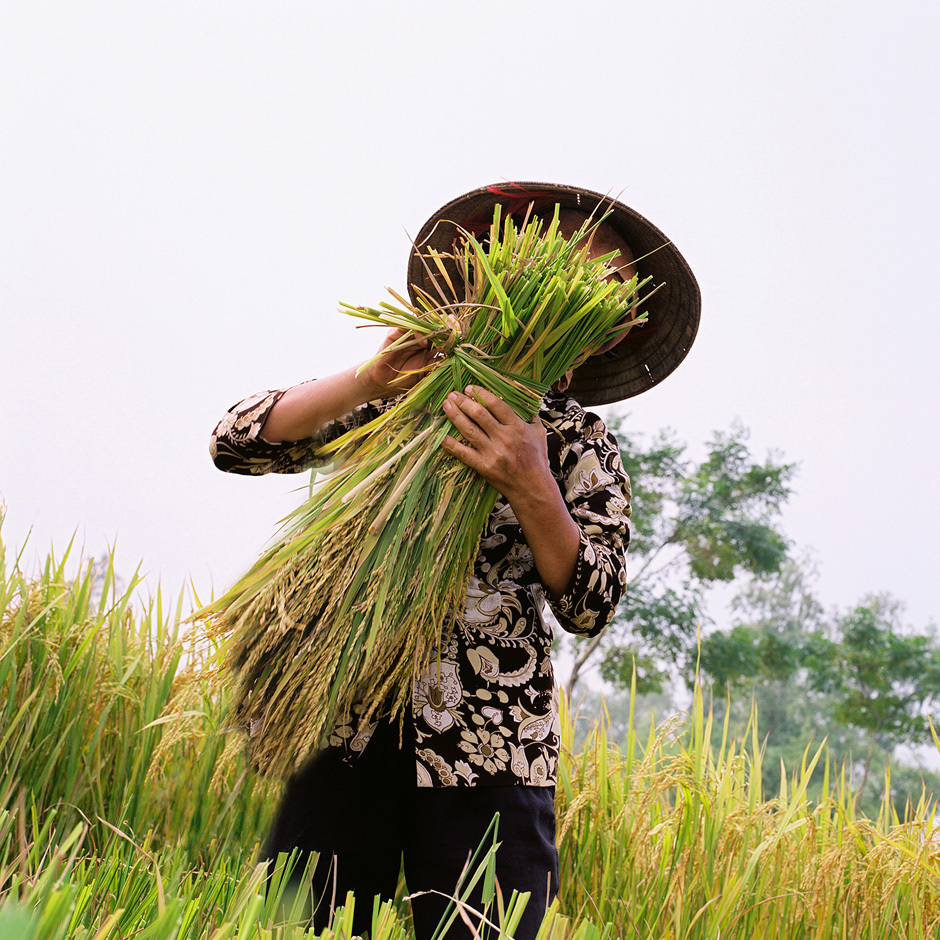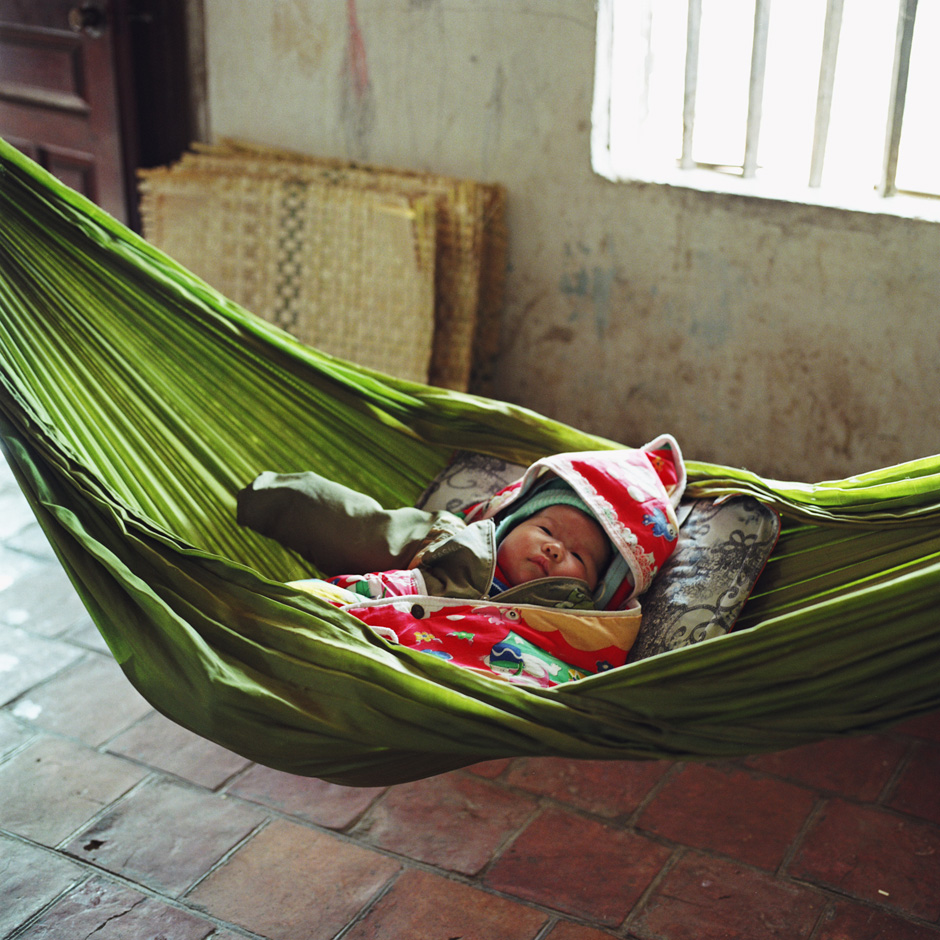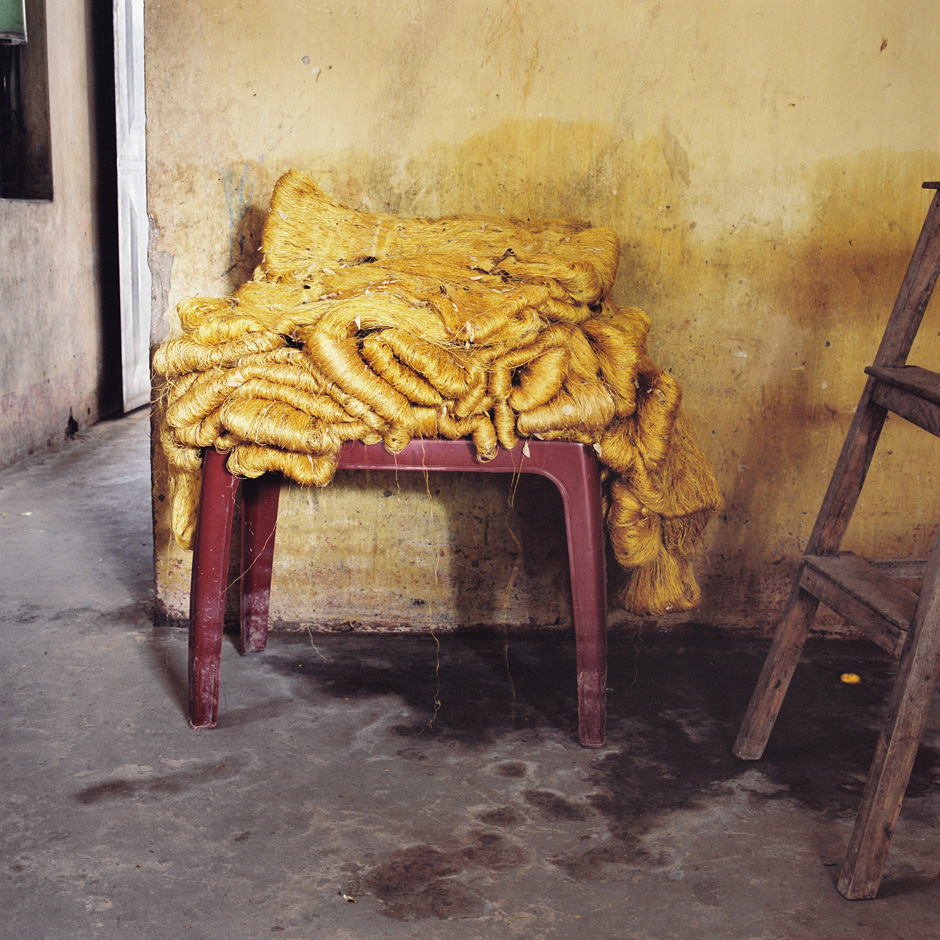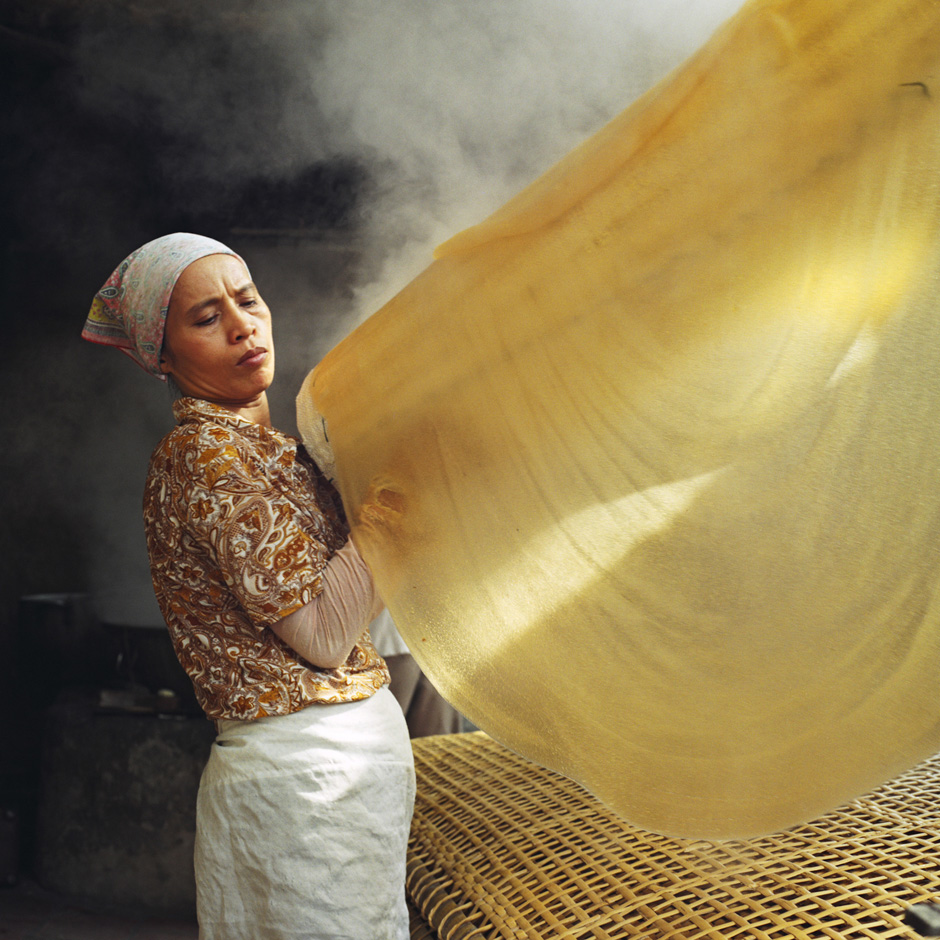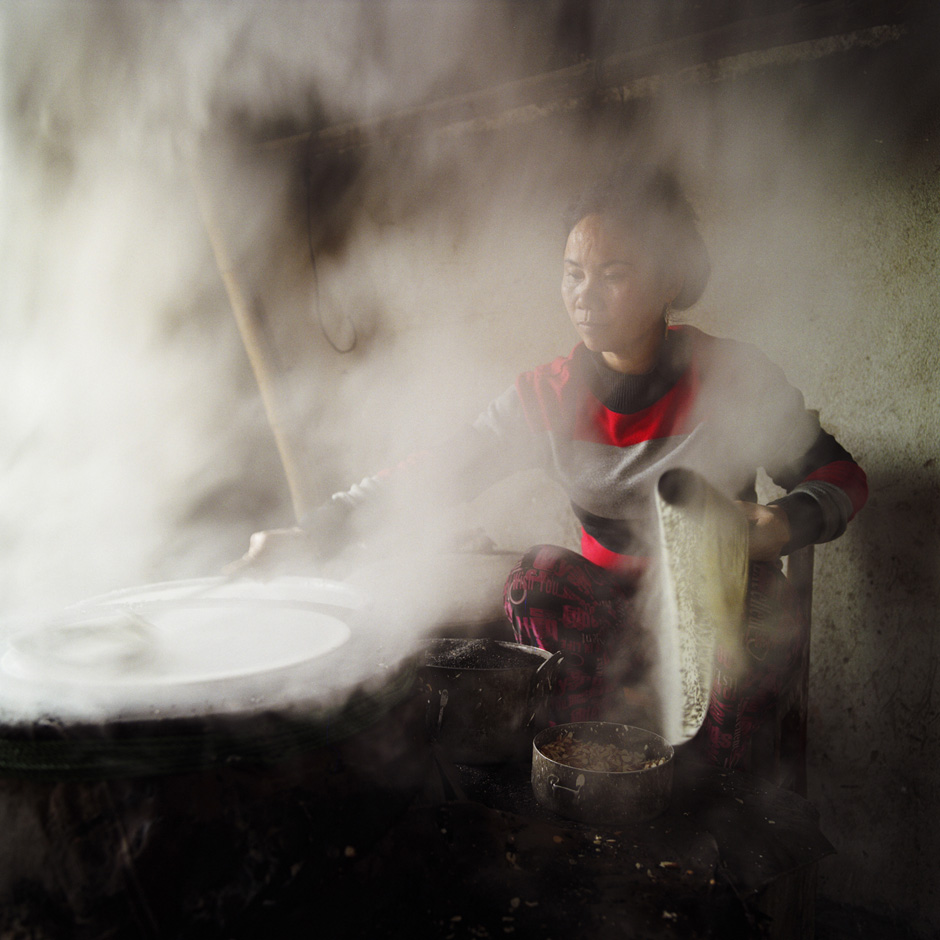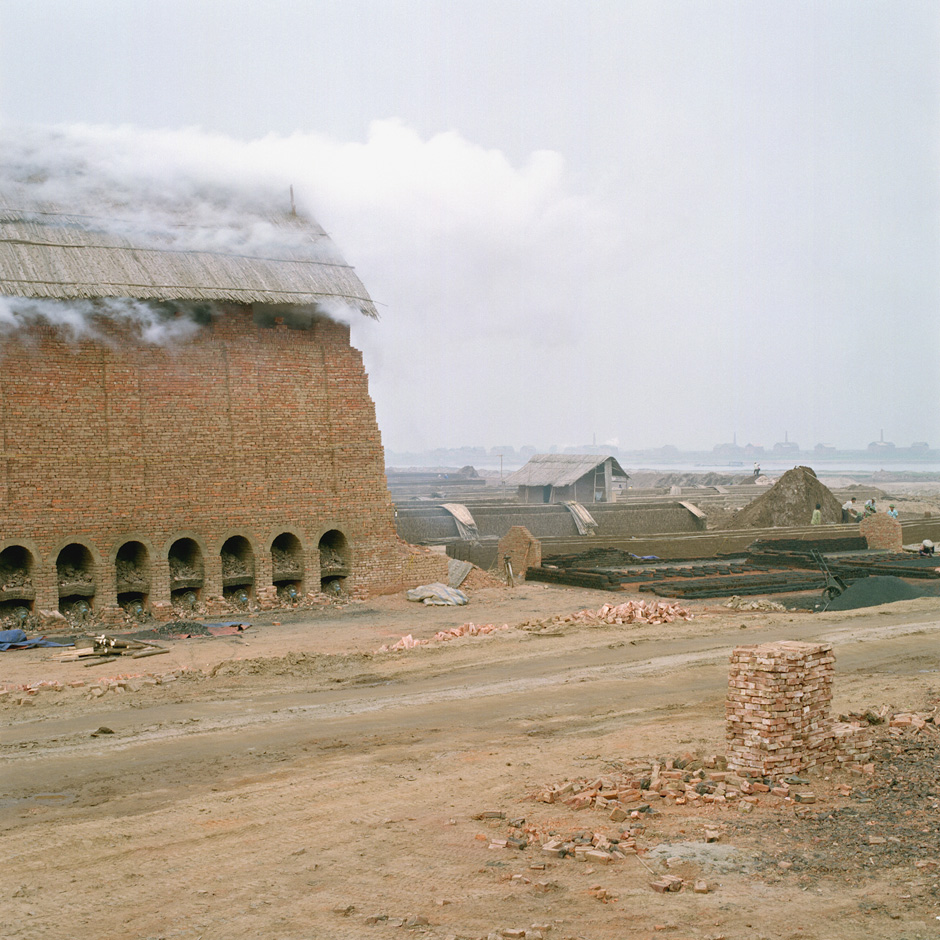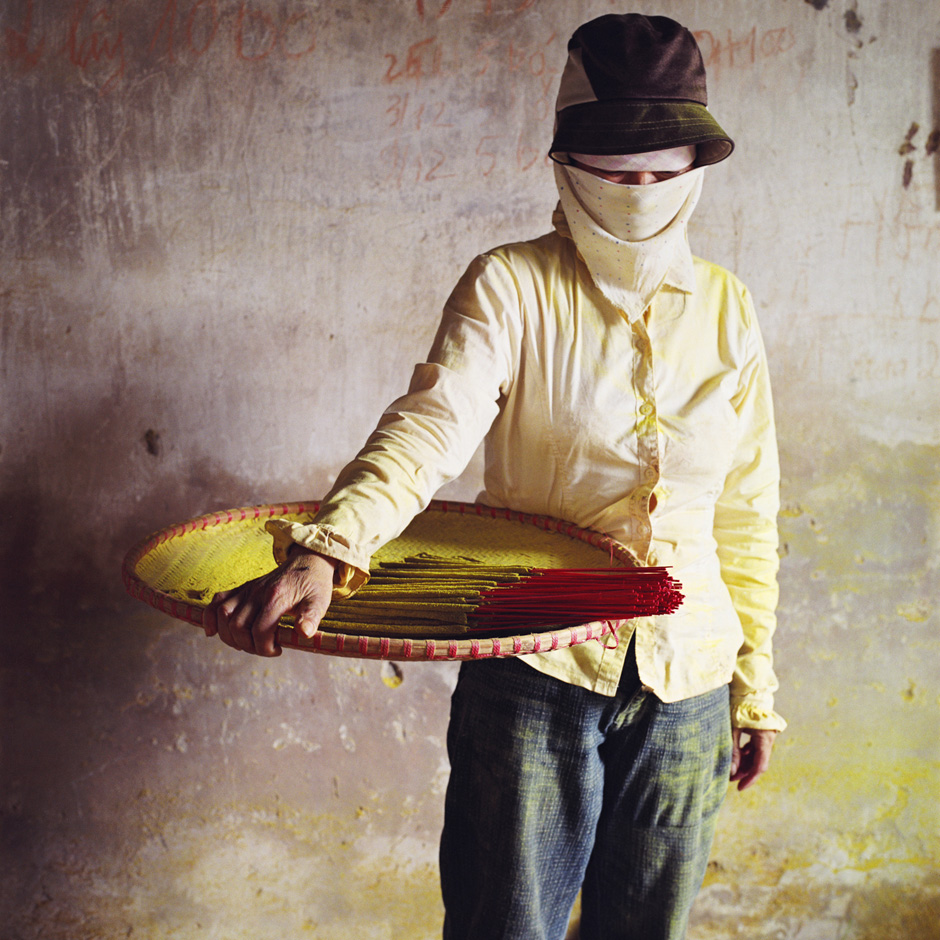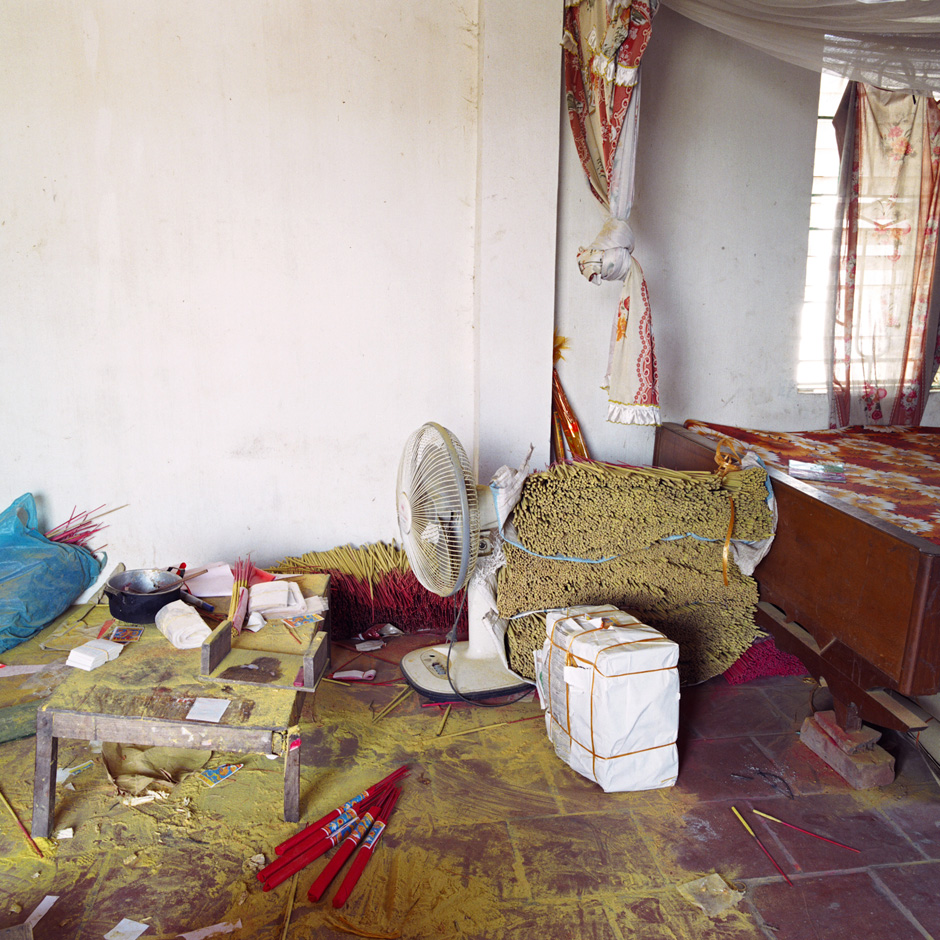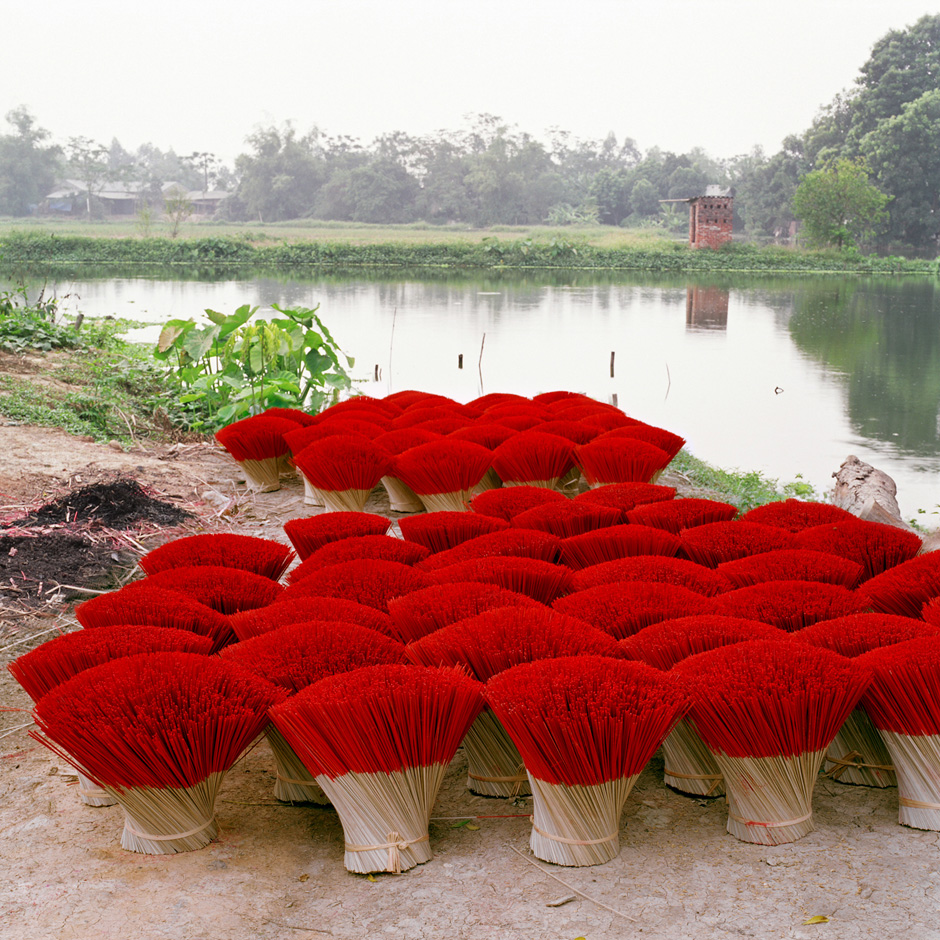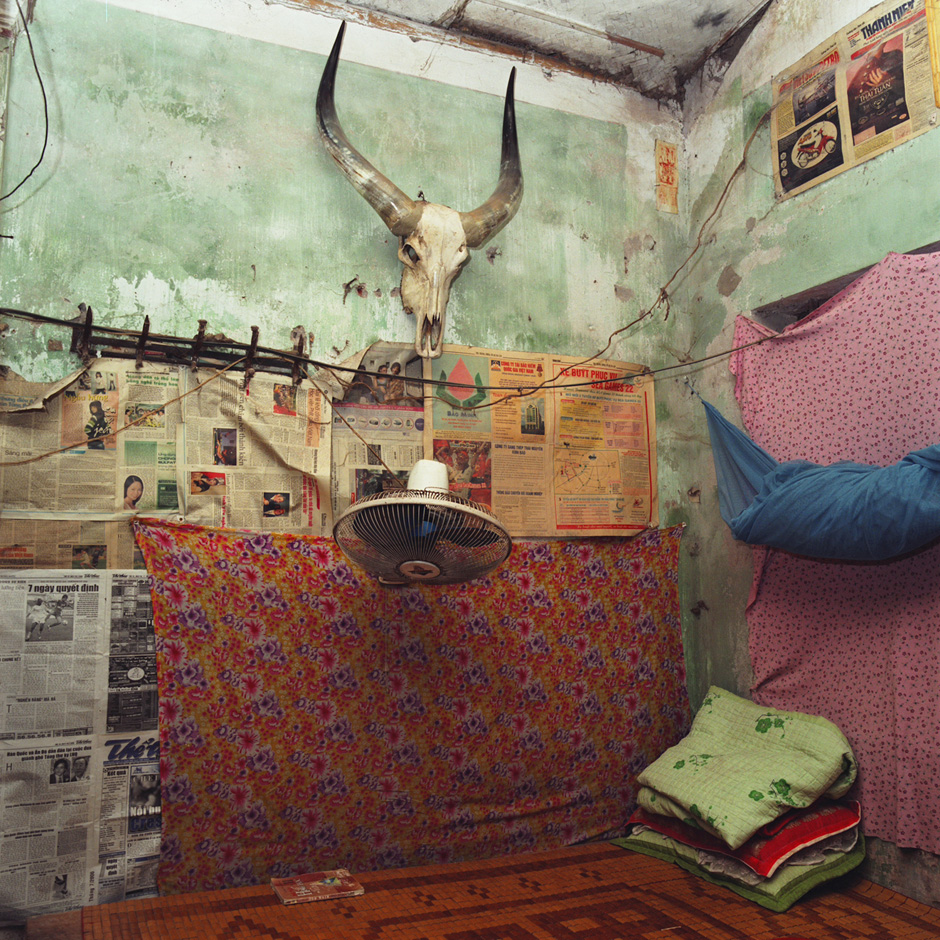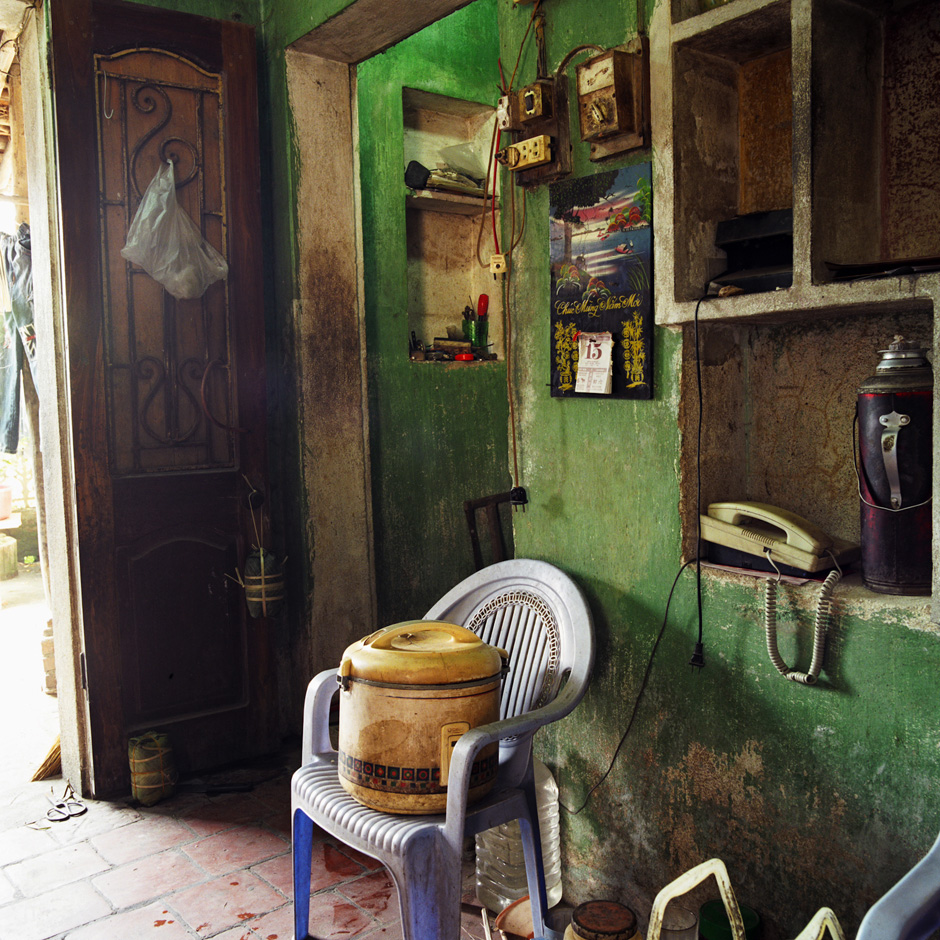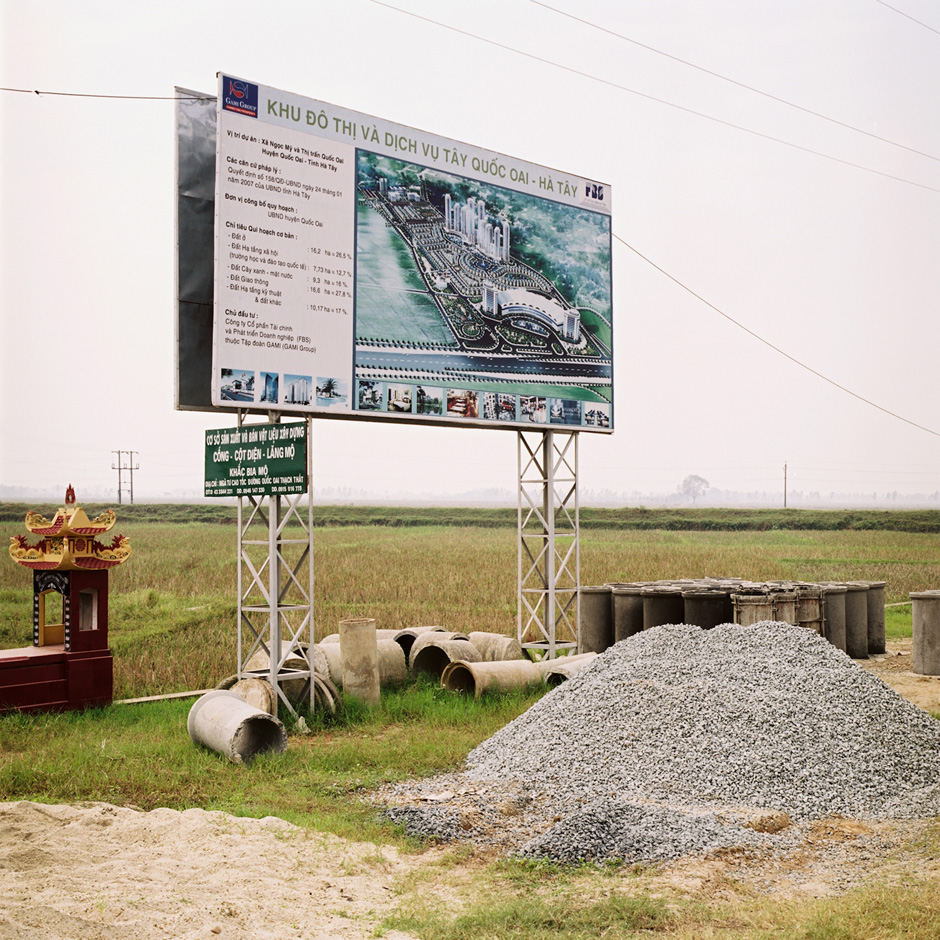Home Work
Home Work looks at Vietnam’s ‘craft’ villages. These specialise in a single product or activity, anything from palm leaf hats to incense sticks, or from noodle making to snake-catching. Some of these ‘craft’ villages date back hundreds of years, whilst others are a more recent response to enable rural farmers to earn much needed extra income.
75% of Vietnam’s population currently live in rural areas but as the country moves towards urbanisation, its agricultural labour force faces losing its land to urban projects – and its way of life. The country’s growing population is reducing the availability of farming land and rural families, no longer able to sustain themselves from the land, are turning to the creation of various products. These ‘craft’ villages have become the meeting place between rural and urban, agriculture and industry.
I spent two six month periods in Vietnam and visited many of these villages. The traditional village house is typically single storey and consists of three rooms. The large central room is a multi-purpose living, sleeping and working area and it is in this room where many of my images are taken, the mix of work and everyday objects fascinated me visually. Interspersed with images from daily life in the rice fields and in the villages, these photographs depict ‘working from home’ in an unromanticised sense, where their subjects, mostly women, balance childcare with the routine work necessary for survival.
During the last decade, along with rapid national economic development many craft villages have increased production up to five fold through small-scale industrial development. However, the consequence of this shift is increased waste and environmental pollution with the resources of the landscape becoming overused.
